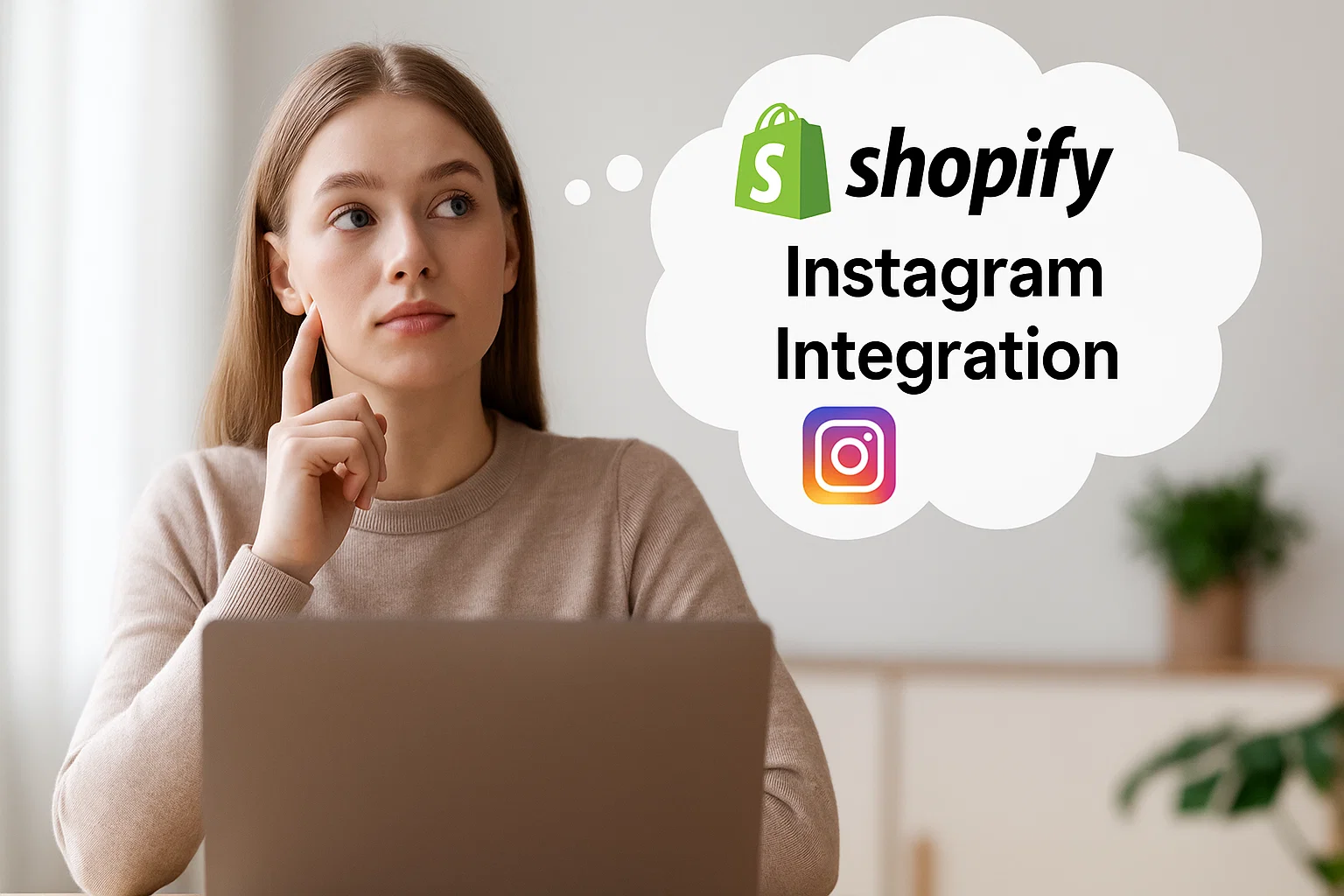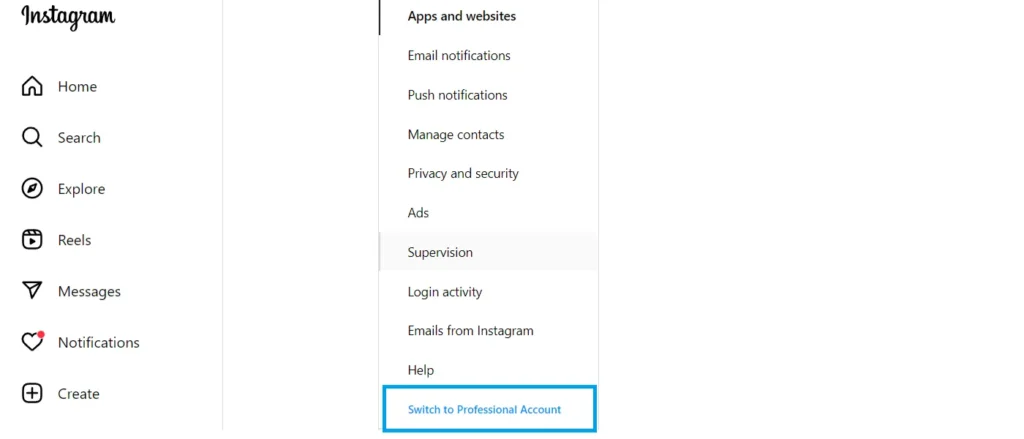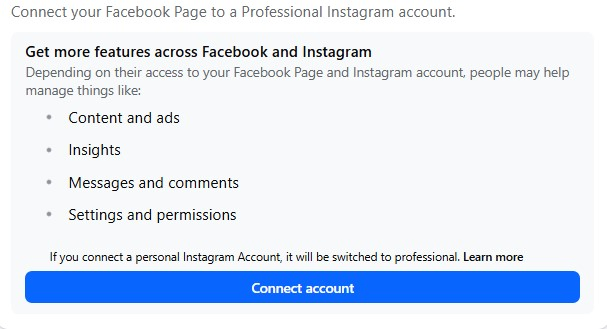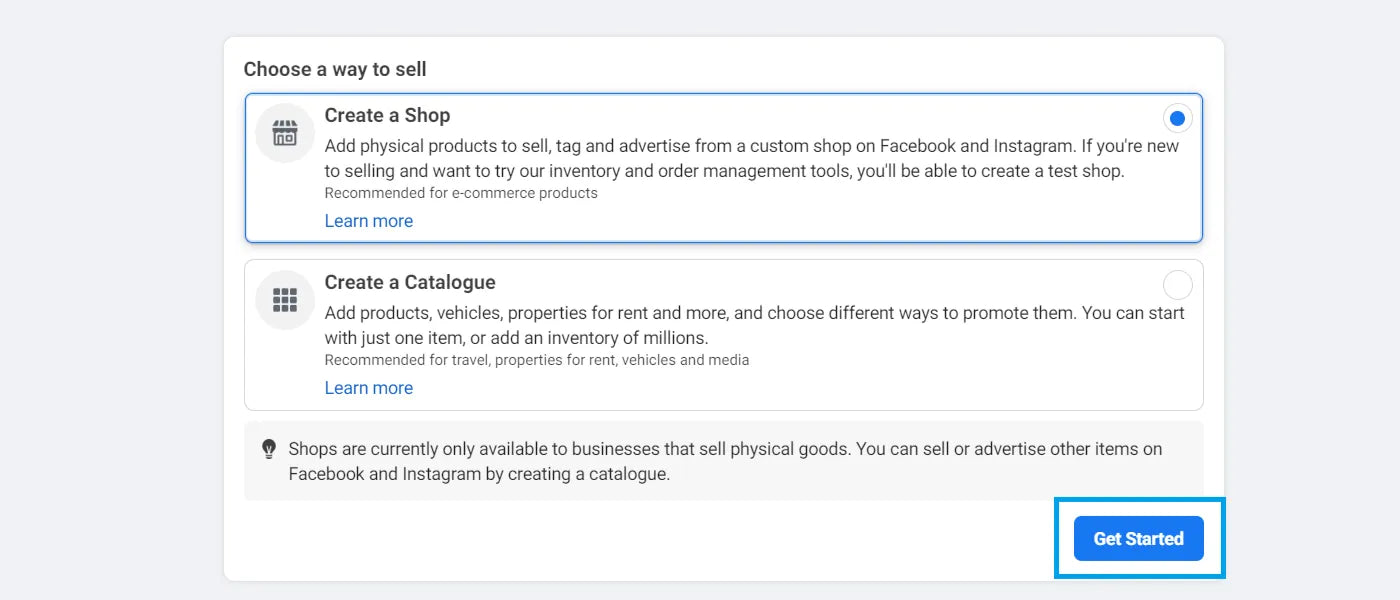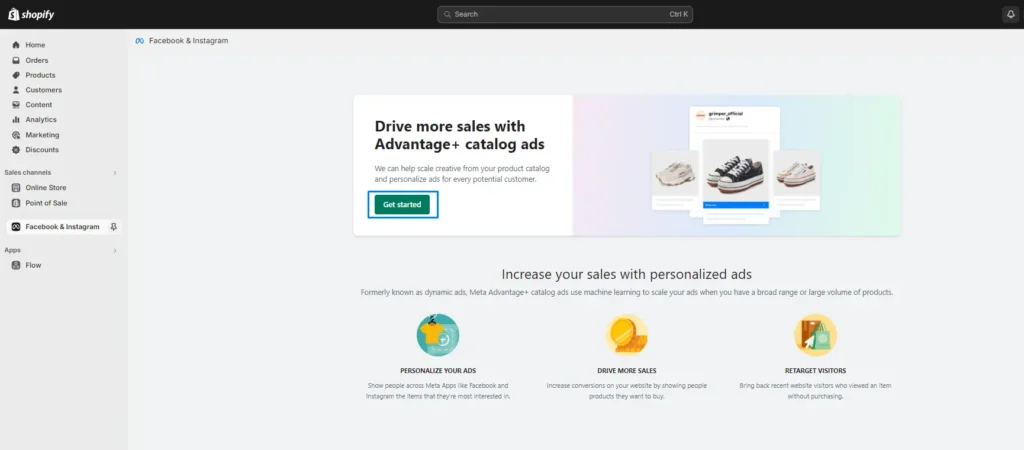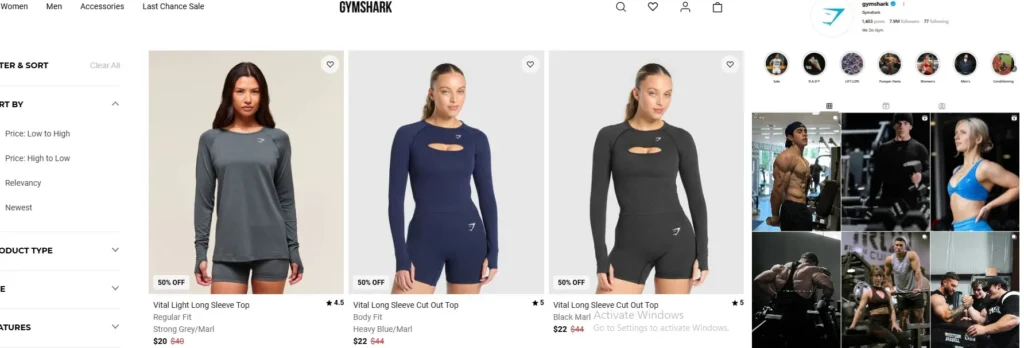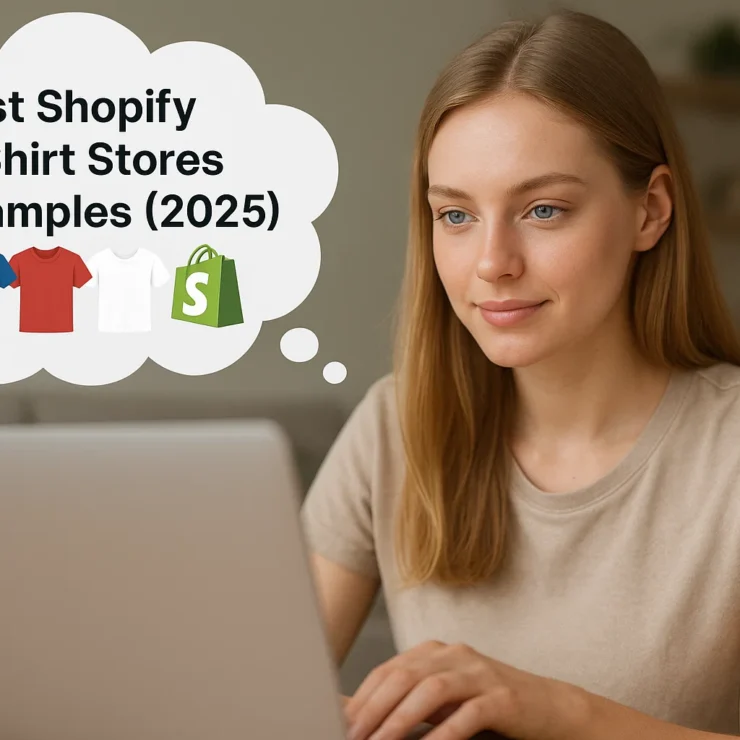Instagram has become more than just a photo-sharing app — it’s now one of the most powerful shopping platforms in the world. Every day, millions of users discover and buy products directly from the app, making it a goldmine for eCommerce brands. If you’re running a Shopify store, you’re already halfway there. But to truly tap into Instagram’s sales potential, you need to connect the two. This is where Shopify Instagram integration comes in.
By linking your Shopify store to Instagram, you can turn your posts, Stories, and Reels into shoppable content, tag products directly, and give customers a seamless checkout experience without leaving the app. Done right, it not only boosts your brand visibility but also drives more conversions from your social audience.
In this guide, we’ll walk you through everything you need to know about how to connect Shopify to Instagram, including setup steps, best practices, and tips to maximize your sales. Whether you’re a seasoned seller or just starting out, this integration can help you transform your Instagram presence into a powerful revenue channel.
Need help while customizing your theme? Here’s how to contact Shopify support in 2025 if you run into any issues.
What is Shopify Instagram Integration?
Shopify Instagram integration is the process of linking your Shopify store to your Instagram business account so you can sell products directly through the Instagram app. Instead of only sharing product photos and hoping people visit your website, you can now tag products in your posts, Stories, and Reels. This makes it effortless for customers to tap, view product details, and purchase — all without leaving Instagram.
At its core, this integration connects your Shopify product catalog to Instagram’s shopping features. Every time you add or update a product in Shopify, it automatically syncs to Instagram. This means your Instagram shop always reflects your latest prices, photos, and stock levels without you having to upload everything twice.
Another big benefit is the seamless checkout experience. Once your store is integrated, Instagram activates its built-in shopping features like product tags, product stickers in Stories, and a dedicated “Shop” tab on your profile. This reduces friction in the buying journey and dramatically improves your conversion rates.
In short, Shopify Instagram integration turns your Instagram account into a fully functional storefront where inspiration and purchase happen at the same time — a perfect blend of social media and eCommerce.
Start a free trial and enjoy 3 months of Shopify for $1/month
🚀 Start Shopify TrialTrusted by over 2,000,000 businesses worldwide
Why You Should Integrate Shopify with Instagram
Instagram has evolved from a photo-sharing platform into one of the most powerful shopping destinations. With over 2 billion active users, your customers are already scrolling, discovering, and buying products directly from their feeds. By integrating Shopify with Instagram, you place your products exactly where your audience spends their time — reducing the number of clicks between discovery and purchase.
Seamless Shopping Experience
When your Shopify store is connected to Instagram, your product catalog syncs automatically. This means you can tag products in posts, Reels, and Stories, letting customers tap and purchase without leaving Instagram. This smooth shopping flow reduces drop-offs and improves conversion rates.
Increased Product Visibility
Instagram’s algorithm favors content that keeps users engaged. Shoppable posts and reels attract higher engagement, boosting your reach organically. Plus, your products can appear in Instagram’s “Shop” tab — an additional discovery channel for millions of shoppers.
Builds Social Proof & Trust
On Instagram, customers can see your product alongside authentic content like reviews, UGC (user-generated content), and influencer partnerships. This creates instant trust and makes people more confident to buy.
Streamlined Inventory & Catalog Management
You don’t have to upload products twice. Updates you make in Shopify (like price changes or new stock) automatically appear on Instagram. This saves time and ensures your store stays accurate everywhere.
Drives Higher ROI from Social Media
With the right tagging and product presentation, Instagram becomes not just a branding tool but a direct sales channel. This means your marketing spend on content creation pays off with measurable revenue.
In short, integrating Shopify with Instagram bridges the gap between inspiration and checkout, letting you turn followers into paying customers faster and more efficiently.
Learn how to effectively add customer reviews on your Shopify store to enhance trust, increase engagement, and boost overall sales conversions.
Requirements for Shopify Instagram Integration
To successfully connect your Shopify store with Instagram (so you can enable Instagram Shopping, tag products, sync catalogs, etc.), you’ll need to meet all of the following prerequisites:
Retail Locations & Eligible Markets
Your business must be based in a country where Instagram Shopping is supported by Meta. If you’re outside supported markets, Instagram won’t allow the shopping features.
Your products must also comply with Instagram/Facebook’s commerce policies and Meta’s eligibility rules (no prohibited items, etc.).
Shopify Store Setup
Your Shopify store must be live (not in password-protected or “coming soon” mode).
You need at least one product (with proper inventory, pricing, and descriptions) in your Shopify catalog.
Your store’s domain must be valid and owned by you (so Instagram/Meta can verify your website) and match the domain where the products are sold.
Facebook & Meta Business Assets
You must have a Facebook Business Page published.
A Meta / Facebook Business Manager (or Business Portfolio) account is required.
An ad account inside Business Manager (admin access) is usually required if you plan to use Instagram Shopping plus promotional ads.
Instagram Account Type & Role
Your Instagram account must be a Business or Creator (professional) account. Personal accounts are not eligible for Instagram Shopping features.
That Instagram account must be connected/linked to the Facebook Page tied to your Business Manager.
Product Catalog and Commerce Setup
You must have a product catalog in Meta’s ecosystem (via Catalogue Manager / Commerce Manager) that syncs with Shopify. Products must be properly described (images, pricing, compliance).
The products must be available for direct purchase via your website domain. Meta will verify that the link leads to pages where customers can buy the item (not just browse).
Business Compliance & Policies
You must comply with Meta’s commerce eligibility requirements, community standards, and commerce policies. If your business or store content violates any rules, Shopping features may be denied.
Your Facebook Page should have no age or country restrictions that limit visibility. These restrictions can prevent the shop from being set up.
Once your store is fully branded, the next step might be multi-channel selling—here’s how to connect Shopify to Amazon easily.
How to Link Shopify To Instagram: Step-by-Step Guide
Step 1: Create a Shopify Store and an Instagram Business Account
To connect Shopify to Instagram, you must have an active Shopify store and an Instagram Business account. If you already have both, you can skip to Step 2.
Create a Shopify store:
Go to Shopify’s website and sign up for an account.
Pick a plan, name your store, and set up your basic business details.
Add your products by creating product pages with images, descriptions, and prices.
Choose a theme that reflects your brand and publish your store.
Create an Instagram Business account:
Download the Instagram app and sign up for an account, or use your existing personal Instagram account.
Switch to a Business account by going to your profile → tap the three lines → Settings & Privacy > Account > Switch to Professional Account > Business.
Follow the prompts to set up your business profile, including website, contact details, and category.
Find the best third-party logistics providers to help scale your Shopify business through fast, reliable, and cost-effective order fulfillment.
Start a free trial and enjoy 3 months of Shopify for $1/month
🚀 Start Shopify TrialTrusted by over 2,000,000 businesses worldwide
Step 2: Connect Your Instagram Account to Your Facebook Page
You need to link Instagram to a Facebook Page to enable Instagram Shopping.
How to connect Instagram to Facebook Page:
Log in to your Facebook account.
Click the drop-down arrow (top right corner) → Settings.
Select Instagram from the left-hand menu.
Click Connect Account and follow the prompts to link Instagram.
Master proven tactics for driving high-quality traffic to your Shopify store using SEO, social media, paid ads, and influencer marketing.
Step 3: Set Up a Facebook Shop
Facebook Shop acts as the product catalog that Instagram Shopping uses.
How to create a Facebook Shop:
Log in to Facebook.
Click the drop-down arrow (top right) → Create Page.
Follow the prompts to create your new page.
Go to Meta Business Suite (formerly Business Manager).
Open Commerce Business Manager and click Create a Shop.
Follow the on-screen steps to set up your shop, add products, and verify your business.
Stay ahead of the curve with trending, high-demand products to sell on your Shopify store in 2025.
Step 4: Link Facebook and Instagram Business Accounts to Shopify
This step integrates your Shopify products with your Facebook and Instagram accounts.
How to link accounts:
In your Shopify Admin dashboard, go to Settings > Apps and sales channels.
Click Add sales channel and select Facebook & Instagram by Meta.
Click Get Started and follow the prompts to log in with Facebook and grant permissions.
Connect your Facebook Page and Instagram Business account.
Once connected, Shopify automatically syncs your products to your Facebook Shop. The approval process can take up to 48 hours.
Want to customize your store’s branding? Learn how to easily remove the “Powered by Shopify” message from your footer.
Step 5: Enable Instagram Shopping
After your Facebook Shop is approved, enable Instagram Shopping to tag products in posts and Stories.
How to enable:
Go to your Instagram profile → tap the three lines → Settings > Business > Shopping.
Select the product catalog you want to connect.
Follow the prompts and wait for Instagram to review and approve your account.
This process usually takes a few days but you can still post content in the meantime.
New to Shopify? Explore how the Shopify website builder helps you launch a professional store with no coding needed.
Step 6: Tag Shopify Products in Instagram Posts and Stories
Once Instagram Shopping is active, you can start tagging products.
How to tag products:
Create a new post on Instagram and upload a photo or video.
Tap Tag Products.
Select the product from your Shopify catalog.
Move the tag to the right spot in your photo or video.
Share your post.
You can also use Product Stickers in Instagram Stories to tag products directly.
Tips To Boost Sales After Successful Shopify Instagram Shop Integration
You’ve connected your Shopify store to Instagram — great job! Now the real work begins. Simply linking your shop isn’t enough; you need to optimize your strategy to drive more traffic, increase engagement, and boost sales. Here are some actionable tips to get you started:
Use High-Quality Visuals for Every Post
Instagram is a visual-first platform. Crisp, clear, and well-edited photos or videos make your products look more appealing and trustworthy.
Use natural lighting and multiple angles to showcase your product.
Create lifestyle shots showing how your product is used in real life.
Incorporate short-form videos or Reels to demonstrate features or unboxings.
This helps your audience connect emotionally with your products and increases the likelihood of clicks and purchases.
Leverage Instagram Stories & Reels
Stories and Reels get prime placement on Instagram and often have higher engagement rates than regular posts.
Post behind-the-scenes content, limited-time offers, or product launches.
Add interactive stickers like polls, quizzes, or countdowns to build hype.
Use “Product Stickers” in Stories to make items instantly shoppable.
This creates a sense of urgency and keeps your brand top of mind.
Collaborate with Influencers & Creators
Influencer marketing on Instagram can be a game-changer for your Shopify store.
Partner with niche influencers who align with your brand’s audience.
Offer them free products or affiliate commissions for promoting your items.
Ask them to tag your products directly in their posts.
This instantly exposes your brand to new, targeted customers and builds social proof.
Run Instagram Ads with Targeted Audiences
Organic reach is great, but Instagram’s ad platform (powered by Facebook Ads Manager) allows you to target specific demographics, interests, and behaviors.
Test different ad formats like carousel ads, story ads, or video ads.
Start with small budgets to find what converts best.
Use retargeting ads for people who viewed your products but didn’t purchase.
Paid campaigns can give a quick sales boost and complement your organic efforts.
Optimize Your Product Descriptions & Tags
Just like SEO for Google, you should optimize your Instagram product descriptions.
Use clear, compelling copy with benefits-driven language.
Add hashtags relevant to your niche (#EcoFriendlyBags, #HandmadeJewelry, etc.).
Ensure every product is tagged correctly in your posts and Stories.
This makes your content discoverable to shoppers browsing those hashtags and improves your shop’s visibility.
Offer Exclusive Promotions for Instagram Shoppers
Give your Instagram audience a reason to buy right away.
Create Instagram-only discount codes or limited-time offers.
Announce flash sales or “first access” launches via Instagram Stories.
Bundle products for special deals and highlight them in posts.
Exclusive offers drive urgency and reward your most engaged followers.
Engage Consistently with Your Audience
Don’t just post and forget. Respond to comments, DMs, and product inquiries promptly.
Use Instagram’s “Quick Replies” feature for faster responses.
Thank customers for tagging your products and repost their content as user-generated content (UGC).
Ask for feedback or reviews to build trust.
An active, personable brand stands out and encourages repeat purchases.
Track Performance and Adjust Strategy
Use Instagram Insights and Shopify Analytics to see what’s working.
Monitor metrics like reach, impressions, product clicks, and conversions.
Identify which posts or ads drive the most sales.
Double down on high-performing content and tweak what’s underperforming.
This data-driven approach ensures you’re not wasting time or money on tactics that don’t convert.
Experiment with Instagram Live Shopping
Instagram Live Shopping lets you sell in real-time while interacting with viewers.
Launch new products live.
Host Q&A sessions or live demos.
Offer special discounts only available during the stream.
This creates an “event” feeling around your products and can generate a sales spike.
Build a Community, Not Just a Customer Base
The biggest long-term sales booster is community.
Share educational content or tips related to your niche.
Highlight customer stories or testimonials.
Engage beyond just selling — ask questions, host giveaways, and celebrate milestones.
When people feel part of your brand story, they’re more likely to buy repeatedly and recommend you to others.
Start a free trial and enjoy 3 months of Shopify for $1/month
🚀 Start Shopify TrialTrusted by over 2,000,000 businesses worldwide
Discover how Shopify Collective helps retailers and suppliers collaborate, streamline operations, and boost revenue with shared product sourcing.
eCommerce Businesses Who Grew After Shopify Instagram Integration
Kylie Cosmetics
Kylie Cosmetics, founded by Kylie Jenner, is another brand that built its success on the back of Instagram and Shopify. With Jenner’s massive following, the brand was able to create a frenzy around its product launches. The seamless integration between Instagram and Shopify allowed them to:
- Create Hype and Anticipation: They used Instagram to announce new product launches, often selling out collections within minutes.
- Leverage Shoppable Posts: The ability to tag products in posts and stories made it incredibly easy for her millions of followers to buy products with just a few taps.
- Utilize Visuals and Influencer Power: The brand’s visually appealing content and strong association with a social media giant were instrumental in its rapid growth.
Gymshark
Gymshark, a leading fitness apparel and accessories brand, is a classic example of a business that leveraged social media to build an empire. They started as a small company and used a powerful social media strategy, primarily on Instagram, to grow their brand. After migrating to Shopify, they were able to use the platform’s scalable features to handle their explosive growth. Their Instagram strategy relies heavily on:
- Influencer Marketing: Gymshark partnered with fitness influencers to showcase their products, creating a loyal community and driving massive engagement.
- User-Generated Content (UGC): They encourage their followers to post content wearing Gymshark gear, which they then reshare, creating authentic social proof and a sense of community.
- Shoppable Posts and Ads: By integrating their Shopify catalog with Instagram, they make it easy for users to tap on a product in a post and be directed to the product page on their website, shortening the path to purchase.
Chubbies
Chubbies, a men’s shorts brand, has a strong online presence and a fun, vibrant brand voice. Their Instagram and Shopify integration has been key to their success by allowing them to:
- Embrace a Fun and Laid-Back Vibe: Their social media campaigns are full of humor and pop culture references, which has helped them build a strong community.
- Promote User-Generated Content: They actively encourage and feature UGC, creating a sense of authenticity and social proof.
- Drive Sales through Social: Their active social media marketing and constant engagement with fans have been a crucial part of their growth, with the Shopify integration facilitating a seamless purchase process.
Explore inspiring Shopify blog examples to learn proven strategies for creating engaging, traffic-driving content on your own store blog.
Conclusion: Shopify Instagram Integration
Integrating Shopify with Instagram is one of the most powerful ways to boost your eCommerce sales in 2025. By linking your Shopify store to Instagram, you transform your profile into a fully shoppable storefront where customers can discover, explore, and purchase your products without leaving the app.
However, success goes beyond just connecting the platforms. High-quality visuals, consistent engagement, influencer partnerships, and targeted ads can amplify your reach and maximize conversions. Treat your Instagram as both a marketing channel and a customer experience hub — and you’ll see measurable growth in traffic, sales, and brand loyalty.
FAQ: Shopify Instagram Integration
Can I use Shopify with Instagram?
Yes. Shopify integrates directly with Instagram through the Facebook & Instagram Sales Channel. Once set up, you can tag Shopify products in your Instagram posts, Stories, and Reels, allowing customers to shop seamlessly without leaving the app.
How many followers do you need to connect Shopify to Instagram?
There’s no minimum follower count to connect Shopify to Instagram. However, you must have:
An Instagram Business or Creator account.
A Facebook Shop linked to your Shopify store.
Products that comply with Instagram’s commerce policies.
Approval for Instagram Shopping may take a few days, regardless of follower count.
How to promote Shopify on Instagram?
You can promote your Shopify store on Instagram by:
Posting high-quality product photos and videos.
Using Reels and Stories with product tags.
Partnering with influencers.
Running paid Instagram ads targeting your ideal customers.
Offering exclusive discounts or early launches for Instagram followers.
Does an Instagram shop take fees?
Instagram itself doesn’t charge a fee for connecting your shop. However, if you enable Instagram Checkout (where customers buy directly on Instagram), there’s a small transaction fee charged by Meta. Orders redirected to your Shopify store are processed under Shopify’s normal payment fees.
Why can’t I connect my Shopify store to Instagram?
If you’re having trouble connecting, common reasons include:
Your Instagram account isn’t a Business account.
Your Facebook Shop isn’t properly set up or approved.
Your products don’t comply with Instagram’s commerce policies.
You haven’t installed the Facebook & Instagram Sales Channel in Shopify.
Review these requirements and try again — most connection issues resolve after setup is completed correctly.
Need Help? Let’s Build Your Shopify Store the Smart Way With – Stores Automation
Why build alone when you can have a team do it for you? At Stores Automation, we create fully automated, done-for-you Shopify stores that are designed to grow while you focus on profits. No tech stress, no guesswork—just a streamlined system that works for you 24/7.
From store setup to product integration, branding, and automation—we handle everything so you don’t have to.
Call us: 302-204-8244
Email us: info@storesautomation.com
Sign up here and let us take it from there.
Let’s build you a store that runs on autopilot—because your time is better spent earning.
